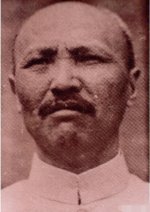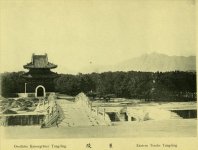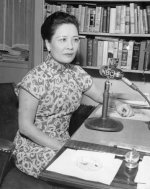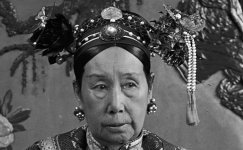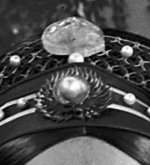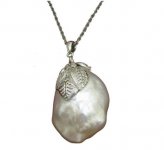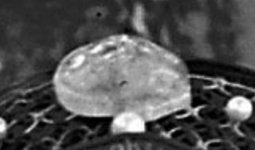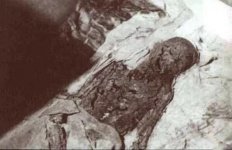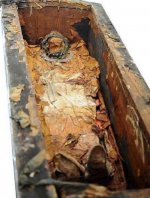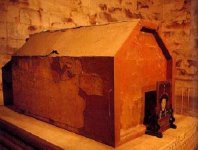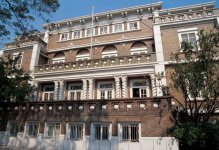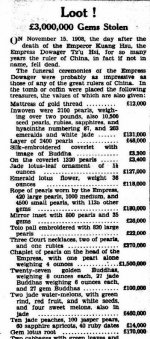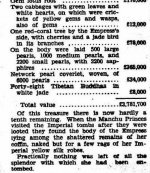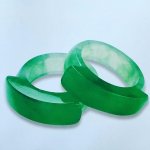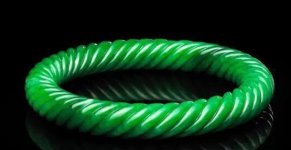I thought I would post this story as this forum is about treasure legends.
A lost priceless treasure of China. Cixi's Night Pearl.
This story begins from 《孙殿英东陵盗宝记》Sun Dian Ying dong ling dao bao ji. Which translates into Sun Dian Ying robbing the Eastern Tombs journal.
Actually the story goes further back but it was this tomb robbing where the item disappeared.
The year was 1762. The Afghanistan King Ahmed Shah Abdali sent a diplomatic mission to China to visit the Qing Dynasty Emperor at the time QianLong. It was on that mission the Chinese emperor was presented a gift. It was a glowing jewel called Ye Mingzhu 夜明珠 which translates into "The Night Pearl". It is said this night pearl is luminous and could glow in the dark.
As the years went by this pearl was handed down from emperor to emperor until it was given to the Empress Cixi 慈禧 also know in english as Empress Dowager.
When she passed away in 1908 The Night Pearl was buried with her in the Eastern Tombs which are in Shen Yang a city in the north east of China.
In 1928 a soldier by the name of Sun Dian Ying robbed the tomb of many of its treasures including, according to the records, treasure number 50 The Night Pearl.
After that it's not 100% known where it went. It may have ended up in the hands of 宋美龄 Song Mei Ling (english name Soong-Meiling) 蒋介石 Jiang Jie Shi's (english name Chiang Kai-shek) second wife.
There is a story, but not confirmed, of Song Mei Ling attending a dance ball when suddenly the power went out. It was pitch black except for one of Song Mei Ling's shoes which had a bright glow that lit up the dance floor.
Further to that story when Song Mei Ling moved to America she fell into hard times and ended up selling The Night Pearl to oil tycoon Rockefeller where it's in the Rockefeller private collection to this day. However, that is just a rumor with no factual evidence to back it up.
As for what this pearl is made of that is unclear. However, in Chinese it is classified as a 金刚石 jin gang shi (diamond). Some experts believe it might be made of fluorite 萤石 ying shi.
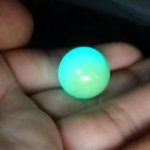
A lost priceless treasure of China. Cixi's Night Pearl.
This story begins from 《孙殿英东陵盗宝记》Sun Dian Ying dong ling dao bao ji. Which translates into Sun Dian Ying robbing the Eastern Tombs journal.
Actually the story goes further back but it was this tomb robbing where the item disappeared.
The year was 1762. The Afghanistan King Ahmed Shah Abdali sent a diplomatic mission to China to visit the Qing Dynasty Emperor at the time QianLong. It was on that mission the Chinese emperor was presented a gift. It was a glowing jewel called Ye Mingzhu 夜明珠 which translates into "The Night Pearl". It is said this night pearl is luminous and could glow in the dark.
As the years went by this pearl was handed down from emperor to emperor until it was given to the Empress Cixi 慈禧 also know in english as Empress Dowager.
When she passed away in 1908 The Night Pearl was buried with her in the Eastern Tombs which are in Shen Yang a city in the north east of China.
In 1928 a soldier by the name of Sun Dian Ying robbed the tomb of many of its treasures including, according to the records, treasure number 50 The Night Pearl.
After that it's not 100% known where it went. It may have ended up in the hands of 宋美龄 Song Mei Ling (english name Soong-Meiling) 蒋介石 Jiang Jie Shi's (english name Chiang Kai-shek) second wife.
There is a story, but not confirmed, of Song Mei Ling attending a dance ball when suddenly the power went out. It was pitch black except for one of Song Mei Ling's shoes which had a bright glow that lit up the dance floor.
Further to that story when Song Mei Ling moved to America she fell into hard times and ended up selling The Night Pearl to oil tycoon Rockefeller where it's in the Rockefeller private collection to this day. However, that is just a rumor with no factual evidence to back it up.
As for what this pearl is made of that is unclear. However, in Chinese it is classified as a 金刚石 jin gang shi (diamond). Some experts believe it might be made of fluorite 萤石 ying shi.



